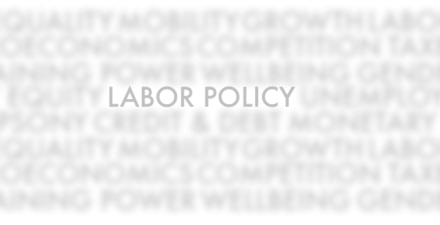U.S. workers, generative AI, and the future of work

The launch of ChatGPT in November 2022 captured the world’s attention and illustrated the potential of generative Artificial Intelligence to instantly perform tasks long considered quintessentially “human.” Already, the technology can pass the bar exam, create professional-looking videos, and outperform most humans on a range of tests. In doing so, the technology is rapidly upending broadly shared assumptions about what kind of work technology can do now and into the future and what its enduring impact will be on U.S. workers and workers around the globe.
In forthcoming analysis for the Brookings Institution’s new project on AI and workers, my colleagues Mark Muro, Xavier de Souza Briggs, and I find that generative AI already boasts the potential to substantially disrupt a wide range of (even highly paid) occupations, from law to finance, customer service, engineering, marketing, creative industries, and administrative roles.
These rapid advances have left many U.S. workers wary about the potential threats AI poses to jobs and livelihoods in the United States. According to a recent Pew Research Center poll, most Americans believe that generative AI will have a major impact on jobs in the next two decades, and more believe it will hurt rather than help them in U.S. workplaces.
Yet how U.S. workers fare in this transition is not preordained by technological possibility alone. The impact of generative AI on the future of work and on U.S. workers themselves depends on the choices that employers, policymakers, technology companies, consumers, workers, and civil society make. These choices will shape what is most at stake for workers: whether they benefit from AI’s productivity gains, whether jobs will be enhanced, automated, or degraded, and whether prosperity will be broadly shared or captured by the few at the top.
It is possible for workers to shape the trajectory of AI. As I document in a new case study and worker storytelling series, the remarkable victory of Hollywood writers in 2023 to secure a first-of-its-kind contract that includes AI safeguards provides a blueprint for other workers and their union leaders across a range of sectors who may face similar threats to their livelihoods. By exercising their power, the writers established guardrails that protect their employment and compensation and ensure they benefit from AI’s gains.
Yet the replicability of their stunning success is hampered by the stark mismatch between the industries most exposed to generative AI and the sectors where workers have substantial union density and access to worker organizations. Today, only about 6 percent of U.S. private-sector workers are represented by a union—and the percentage is even lower in fields such as business and financial operations, the law, and science, technology, engineering, and mathematics—all of which are highly exposed to AI’s disruptive potential.
This mismatch underscores the importance of labor law reforms at the federal and state levels that enhance workers’ ability to exercise power in their workplaces. It also points to the need for a wider range of institutions—from worker groups to policymakers, civil society organizations, employers, industry, and consumer groups—to proactively open opportunities for worker voice, collaboration, and guardrails.
Recent history shows that unmitigated technological advancement can exacerbate inequality and cause lasting pain for workers and their communities. Whether generative AI in U.S. workplaces lives up to its potential to unlock new possibilities for U.S. workers and spread shared prosperity will depend on the ability of workers to shape it.
Interested in hearing more? Register to attend our upcoming event, “Research on Tap: Three Forces Shaping the 2024 Economy,” where panelists will discuss how powerful forces, such as climate change, generative AI, and economic inequality, are shaping the U.S. economy in this critical election year.







